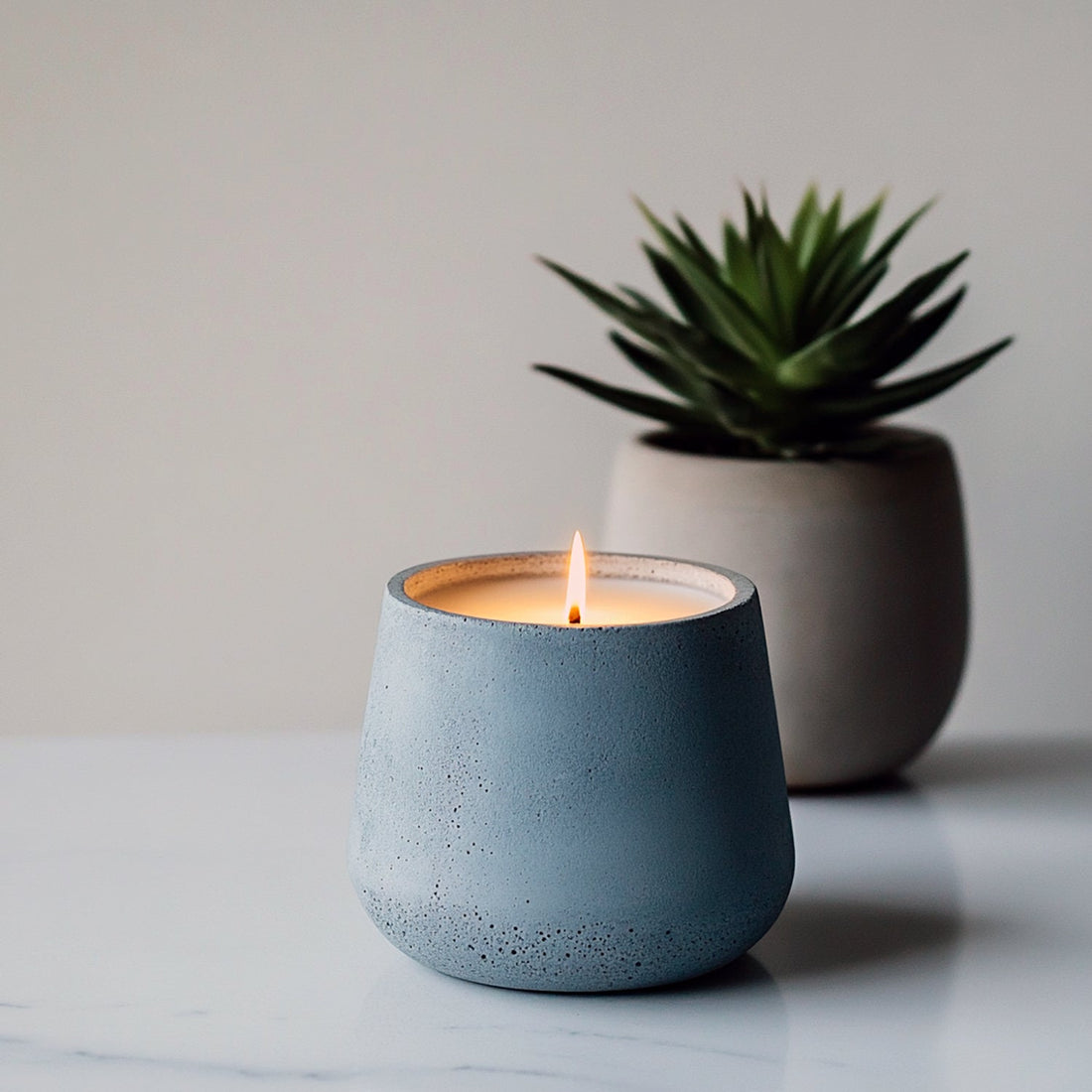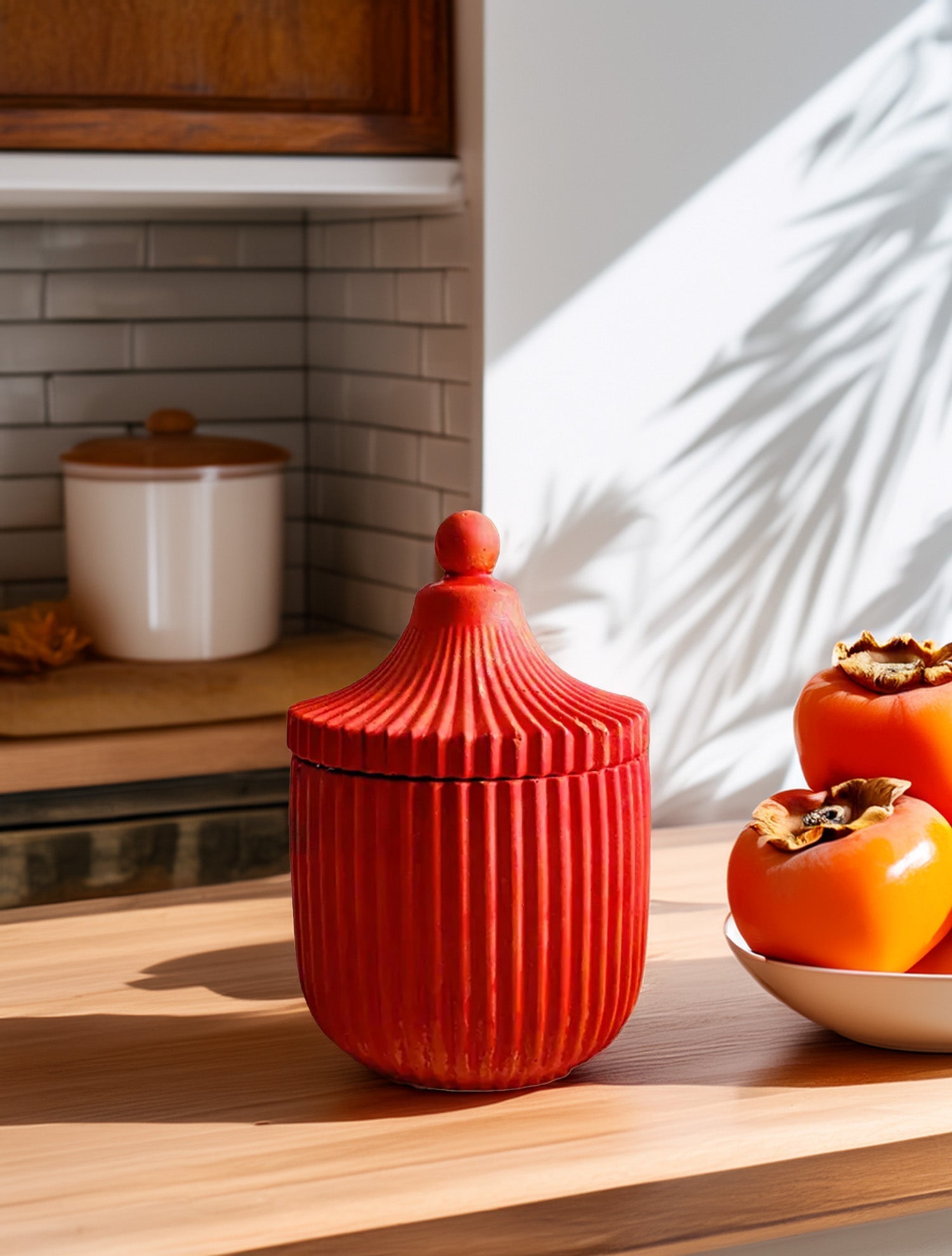
How I Seal and Protect My White Concrete Candle Vessels for a Long-Lasting Finish
Share
If you've ever made white concrete candle vessels, you know how elegant and modern they look, with their sleek surfaces and minimalist aesthetic—at first. But if you don’t seal them properly, they can absorb wax, oils, and stains, dulling that crisp white finish.
I learned this the hard way when my first few vessels started looking dingy after just a few burns. Wax seeped into the concrete, creating stubborn stains, while dark soot marks formed around the rim due to improper sealing.
So, after testing multiple methods—including different sealers and application techniques—I’ve figured out the best way to seal and protect white concrete candle vessels for long-lasting beauty.
Why Sealing is a Must for Concrete Candle Vessels
Concrete is naturally porous, meaning it acts like a sponge and soaks up wax, fragrance oils, and even dust. If you don’t seal it, your bright white vessels can quickly turn yellowish or stained. Here’s why sealing is a game-changer:
- Keeps wax from seeping in—easier cleanup and reusable vessels.
- Prevents stains from fragrance oils and soot.
- Strengthens the vessel, reducing cracks and chips.
- Keeps the white color looking fresh instead of dingy.
Best Sealers for White Concrete Candle Vessels
After experimenting with various products, I've found that the best sealers for concrete candle vessels should be heat-resistant, non-yellowing, and long-lasting. A good sealer prevents wax and fragrance oil absorption, maintains the vessel’s appearance, and withstands repeated exposure to heat. Here are some reliable options that meet these criteria:
1. H-Seal Concrete Countertop Sealer
-
Finish: Delicate matte
-
Heat Resistance: Up to 392°F (200°C)
-
Why I Recommend It: Originally designed for countertops, this sealer provides excellent heat resistance, making it suitable for candle vessels. Its matte finish preserves the natural look of the concrete.
-
Where to Find: H-Seal on Amazon
2. Eco Advance Concrete/Masonry Siloxane Waterproofer
-
Finish: Clear, natural look
-
Heat Resistance: Suitable for candle vessels
-
Why I Recommend It: This water-based, non-toxic sealer is easy to apply and doesn't alter the appearance of the concrete. It's a favorite among candle makers for its effectiveness and safety.
-
Where to Find: Eco Advance on Amazon
3. Rutland Products Water-Based Concrete Sealer
-
Finish: Satin sheen
-
Heat Resistance: Formulated for high-heat applications
-
Why I Recommend It: Designed for sealing concrete floors and countertops, this sealer withstands high temperatures, making it a strong option for candle vessels. While it may not be specifically formulated for candle-making, its durability and heat resistance make it a practical choice for protecting against wax absorption and discoloration. It's water-based and easy to apply.
-
Where to Find: Rutland Products Sealer on Amazon
4. Bondall Pot and Ornament Sealer
-
Finish: Natural matte
-
Heat Resistance: Suitable for planters and candle holders
-
Why I Recommend It: Specifically formulated for sealing concrete pots and ornaments, this sealer is both waterproof and heat-resistant, making it a versatile choice for various projects.
-
Where to Find: Bondall Sealer at Bunnings
Step-by-Step Guide to Sealing Heat-Exposed Concrete Candle Vessels
Step 1: Prep Your Vessel
- Let the vessel fully cure (at least 24-48 hours after making).
- Lightly sand the surface for smoothness.
- Wipe off dust with a damp cloth and let dry.
Step 2: Apply the Heat-Resistant Sealer
- Use a soft brush, foam roller, or spray bottle, depending on the sealer type. For thick or gel-based sealers, a soft brush ensures even coverage. A foam roller works best for water-based sealers, helping to avoid streaks. For thin or penetrating sealers, a spray bottle provides an even application without overloading the surface.
- Apply thin, even coats to avoid streaks.
- Allow each coat to dry fully before adding another.
- Apply at least 2-3 coats for best protection against heat and stains.
Step 3: Let It Cure
- Most sealers need 24-72 hours to fully cure. To check if it's ready, gently touch the surface—if it feels dry and no longer tacky, it's likely cured. Another test is to place a few drops of water on the surface; if the water beads up rather than soaking in, the sealer has set properly.
- Avoid handling or exposing to moisture during this time. Store the vessels in a dry, dust-free environment with good air circulation to prevent accidental moisture absorption or contamination.
- Once cured, your vessel is ready for candle pouring!
Common Sealing Mistakes (And How to Avoid Them)
- Skipping surface prep – Not sanding or cleaning properly leads to uneven sealing.
- Applying too much at once – Thick coats can streak or cloud up.
- Using the wrong sealer – Some sealers aren’t heat-resistant and can break down over time.
- Not letting it cure fully – Handling too soon weakens the protection.
How to Maintain Sealed Concrete Candle Vessels
- For dust and fingerprints – Wipe with a dry microfiber cloth.
- For wax spills – Let wax cool, then gently scrape off.
- For deep stains – Use a mild soap and water solution—avoid harsh chemicals.
- For long-term care – Reapply heat-resistant sealer once a year if needed. Signs that indicate resealing is necessary include a dull or uneven finish, increased absorption of wax or fragrance oils, and noticeable wear or fading in high-use areas.
Final Thoughts
Sealing my white concrete candle vessels with a heat-resistant sealer was a game-changer. Now, my vessels stay bright, durable, and safe for high temperatures. Whether you love a matte, satin, or glossy finish, choosing a sealer that can handle heat is key to making sure your vessels last. If you’ve ever struggled with yellowing, wax stains, or heat damage, try sealing with the right product—trust me, it makes all the difference!
Have a favorite heat-resistant sealer or a sealing technique that works well for you? Drop it in the comments—I’d love to hear what’s worked for you!

